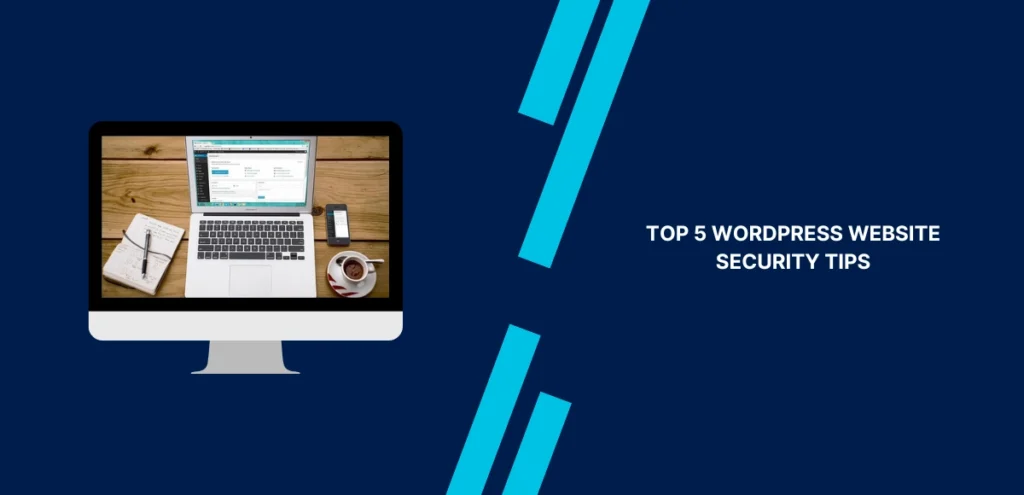Cyber-attacks are increasing by the day, as more and more people take to the internet. It’s for this reason why you’ll want to ensure that your WordPress website security is up to scratch.
WordPress is the most well-known content management system that is used on over 30% of all the websites on the internet today. Ultimately, it’s free to use, but there are a number of premium features, which come available at reasonable prices.
Recent studies have shown that over 70% of sites on the internet, are vulnerable to attacks from cyber criminals. This is because webmasters fail to provide their websites with adequate security.
In addition to that, close to 10% of security loopholes, on WordPress sites, is created by having a weak password. So the first thing you’ll want to do, is ensure you’re using a complex password.
There are a number of things you’ll need to be aware of, if you want to secure your site. In this article, I intend to discuss the top 5 WordPress website security tips. So continue reading, if you want to make your website hack-proof.
Table of Contents
Toggle1. Use Two-Factor Authentication
If you implement two-factor authentication on your login page, you can almost guarantee the security of your site. When you adopt this two-factor method, the user is required to provide two modes of authentication. It could be a standard password, and a secret code or question. This helps by increasing the level of security, right at the login screen.
2. Update Your WordPress Site Regularly
Whenever WordPress comes out with a new release, it always comes with improved security measures. Lots of vulnerabilities and bugs are identified and repaired, with each new version.
Whenever end users identify a particular issue with WordPress, whether it be a fault or malicious bug, the development team will get to it, and release a new update that irons out these identified problems. Thus, if you don’t update, you miss out, and put your site at risk.
Updating your WordPress is fairly simple, and can be done from the dashboard. Depending on the type of update, whether it’s a small update or major update, will determine whether or not you’ll need to update your WordPress site manually or whether it’ll happen automatically.
3. Use Login Limits
When you use login limits, you protect your site against brute force attacks, which typically work, by consistently making login attempts.
If you allow these hackers to try as many different password combinations as they want, then it’s only a matter of time, before they eventually guess right and gain full access to your website.
Adding a login limit to your website is relatively simple. The best way to do it is by downloading the appropriate plugin. These plugins are typically multifaceted, which means, they’ll offer additional forms of security, which you may want to look into.
So yes, go out there and get a plugin that will limit login attempts, to no more than 3 – 5.
4. Change Your Password Regularly
One of the most effective ways to keep your website security, is by constantly changing your password. You’ll want to keep note of your password strength, so that hackers cannot easily guess it. Consider using special characters, numbers and uppercase and lowercase letters. The stronger the password, the less likely it is, for someone to crack it.
5. Switch to HTTPS
There are so many different kinds of attacks that happen on the internet, such as those that involve intercepting sent data.
Often times, when this happens, neither the sender nor the receiver is aware that their data has been hijacked. When you use HTTPS, you keep your traffic data secure <a href=”https://www.compuchenna.co.uk/apo-encryption-standard-edition-for-pc/”>by encrypting it</a>, behind SSL certificates.
If you want to use HTTPS, then the first thing you’ll need to do is purchase a SSL certificate. The difficulty of attaining one, depends greatly on your hosting company.
Most hosting companies will be able to automate the entire process of migrating over to HTTPS, whereas other companies may require you to do it manually.
Your wp-config.php file will need to be edited to reflect your transition to HTTPS.
Once the backend of the website has been moved to HTTPS, you’ll then have to go through the arduous task of switching the site over from HTTP to HTTPS.
There are many plugins that you can use to do this, not only will you need to change the site address, but you’ll also have to change all the image URLs (in posts), and your plugin URLs, ensuring that nothing points to the old HTTP.
Uchenna Ani-Okoye is a former IT Manager who now runs his own computer support website https://www.compuchenna.co.uk.
